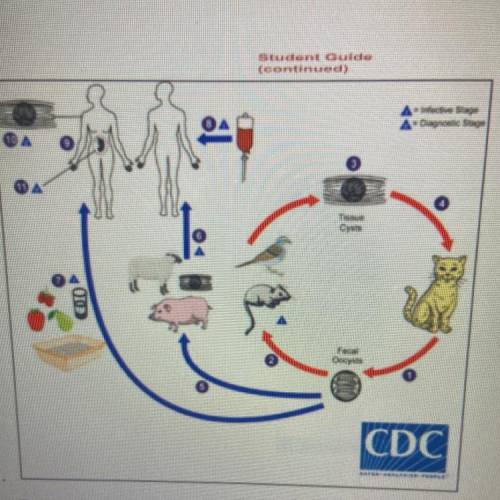
Biology, 04.05.2021 19:30 kianofou853
Toxoplasmosis is a disease caused by the microscopic parasite Toxoplasma gondii.
The parasite usually infects mice, affecting their nervous system and causing them to
take unusual risks (such as running out in the open, and coming unusually close to
animals which may eat them). Scientists believe this is actually a way for the parasite
to reach its primary host – cats. When a cat catches and eats an infected mouse, the
Toxoplasma gondii enters its digestive system and steals nutrients from the cat.
Humans can become infected by Toxoplasma gondii through contact with cat feces.
Scientists now believe that Toxoplasmosis in humans can cause substantial changes
in mood and behavior, and may even be linked to certain types of depression. It is
estimated that 30-65% of people worldwide may be infected with Toxoplasma gondii.
I


Answers: 2


Another question on Biology

Biology, 21.06.2019 20:00
With the description of the different cell walls, membranes, and associated proteins set in the students' minds, you now need to introduce them to the idea that the cell wall can also act as a foundation to build things upon. bacterial appendages require a strong foundation that will offer the support needed to move and function in a dynamic world. for example, flagella are long, whiplike protein structures that are used by many gram-positive and gram-negative bacteria for locomotion. in order to function effectively, a flagellum must be firmly anchored to the cell wall. how will you be able to get across the idea that the peptidoglycan cell wall is strong enough to support such a mechanism? with a protein rod that passes through the cell wall and protein rings used to anchor it in the membranes, these basal bodies are the rudimentary biological motors that use atp power to spin the hook and the flagella attached to it. bacterial flagella have a biological motor that spins within the cell wall and is powered by atp. this allows the flagella to spin in a whiplike motion to propel the bacterium.
Answers: 3

Biology, 22.06.2019 00:30
On a recent expedition to a remote region of northern canada, scientists uncovered skeletal remains from about 100,000 years ago. surprisingly, all the skeletal remains, which included many species from differing biological families and spanned about two thousand years, showed evidence of experiencing temperatures in excess of 1000 degrees fahrenheit (or 538 degrees celsius). which of the following, if true, best explains the apparent paradox between the cold environment and the evidence of the bones experiencing hot temperatures? (a) chemical changes that naturally occur during the process of decay in only one north canadian species produce the same evidence of the species' skeletons being exposed to hot temperatures as the expedition scientists found. (b) a little over 103,000 years ago, a large fire is known to have occurred in northern canada. (c) strong evidence exists that as early as 70,000 years ago, homo sapiens around the world relied heavily on fire to cook animals. (d) in the same expedition and in roughly the same layer of excavation, scientists found rudimentary wood cutting and hunting tools used by early humans.
Answers: 3

Biology, 22.06.2019 23:00
This problem has been solved! see the answerfor aerobic respiration, a variety of substances must be in a state of influx across the inner membrane. assuming a brain cell in which glucose is the sole energy source, indicate for each of the following substances whether you would expect a net flux across the membrane and if so, how many molecules will move in which direction per molecule of glucose catabolized.- electrons-pyruvate-oxygen-atp-adp-acetyl coa-glyceral-3-phosphate-nadh-fadh2-oxaloacetate-water-protons
Answers: 1

Biology, 23.06.2019 00:30
What best explains the relationship between photosynthesis and cellular respiration?
Answers: 1
You know the right answer?
Toxoplasmosis is a disease caused by the microscopic parasite Toxoplasma gondii.
The parasite usua...
Questions

Physics, 28.06.2019 10:00

Mathematics, 28.06.2019 10:00


History, 28.06.2019 10:00

Mathematics, 28.06.2019 10:00

Mathematics, 28.06.2019 10:00


Mathematics, 28.06.2019 10:00

Mathematics, 28.06.2019 10:00

Mathematics, 28.06.2019 10:00



English, 28.06.2019 10:00

History, 28.06.2019 10:00

Mathematics, 28.06.2019 10:00


Mathematics, 28.06.2019 10:00

Health, 28.06.2019 10:00

History, 28.06.2019 10:00

Social Studies, 28.06.2019 10:00



